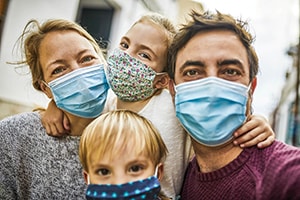By Erin Petenko/VTDigger
As Vermont schools settle into the school year, state data shows that the number of cases among young children has risen dramatically in recent weeks.
Infections among children under 12 rose to a peak in late August, then began to decline, but they’ve shot up again in the past two weeks, according to Vermont Dept. of Health data analyzed by the Department of Financial Regulation.
Children under 12 are not yet eligible to receive the vaccine, so all cases among that population are in unvaccinated children.
According to state data, the rate of cases is highest in the 5-9 age group, followed by children under 5. Cases among 15- to 18-year-olds rose in mid-August but have mostly remained at the same level since then.
Why the sudden rise?
It appears to coincide with the start of the school year. The state has reported at least 81 Covid-19 cases among students and staff in K-12 schools. But that total is likely an underestimate of the true impact of the latest surge on school kids, since the state tracks only infections that could have led to potential exposure.
“School[s] reflect their communities in matters of public health,” said Ben Truman, a spokesperson for the health department. “Meaning, when you have community transmission of the virus, you will see cases in the schools. While there are a number of schools with cases among students and staff members, we are not seeing outbreaks or virus transmission within schools at this point.”
Two major outbreaks in August have been linked to other places associated with children: A summer camp in central Vermont led to 38 cases, and a central Vermont wedding caused a secondary outbreak in a local day care.
On Wednesday, Gov. Phil Scott asked schools to extend their mask mandates for students and staff to Oct. 4, citing the surge in the Covid-19 Delta variant.
Despite the surge, few childhood Covid-19 cases so far have led to hospitalizations, a sign that children are not being affected by the most severe complications of the virus.
Two people between infancy and age 19 have been hospitalized since the surge began, both in September, Truman said.
Vermont also appears to be doing well compared with less vaccinated states elsewhere in the country. Although Vermont has attracted public scrutiny for having the highest percentage of cases in children, that data can be misleading when taken out of context.
About 23% of cases in Vermont have been in children, according to the American Academy of Pediatrics. That’s the highest reported in the nation, far higher than the national average of 15% — but that’s more a reflection on Vermont’s high vaccination rate causing fewer cases among the general population. In other words, because Vermont has the third-highest vaccination rate in the nation (it had been first in the nation until a few weeks ago) and since vaccinated people, mostly adults, are less at risk of contracting Covid-19, Vermont has a lower rate of adult infections than most states — meaning that more of the cases that do happen are in children.
The American Academy of Pediatrics also released data on the rate of childhood Covid-19 cases in each state. By that metric, Vermont is actually the fifth-lowest in the nation. It had a rate of fewer than 5,000 cases per 100,000 children, compared with the national average of 6,709 per 100,000.
Vermont is also one of seven states to report no deaths in children as of Sept. 2, according to the American Academy of Pediatrics.




